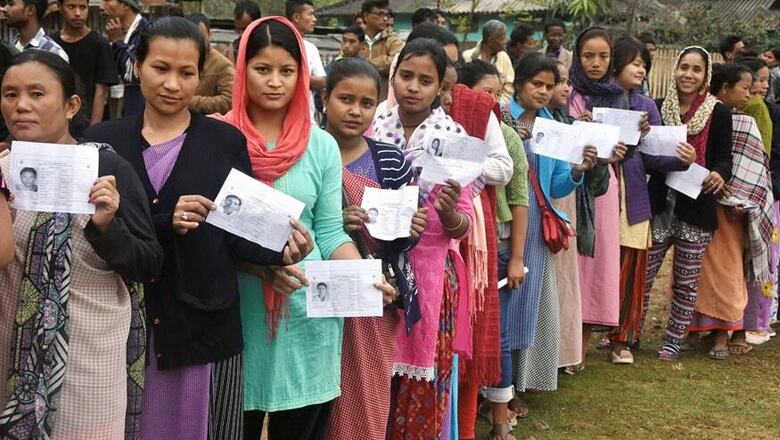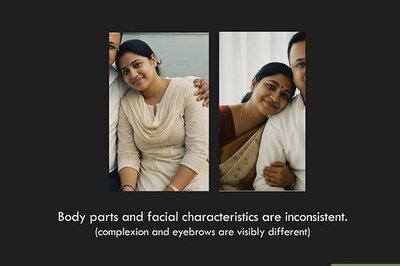
views
New Delhi: The Law Commission of India has proposed holding simultaneous state and general elections and has sought public opinion on its recommendations regarding the same.
The panel has sought public opinion on its proposed recommendations on the feasibility of holding simultaneous elections in the country and has proposed a series of Constitutional and other amendments to the Representation of Peoples Act, 1951, and Rules of Procedure to carve the way for ‘One Nation, One Poll’.
After a full commission meeting at the Law Commission on Tuesday, Chairman Justice BS Chauhan released a list of recommendations for holding simultaneous elections and another draft prepared by the commission.
Prime Minister Narendra Modi has made no secret of his desire to hold simultaneous state and general elections on grounds that a continuous electoral cycle disrupts governance.
President Ram Nath Kovind, too, stressed on the need to hold simultaneous polls to the Lok Sabha and state assemblies.
The commission has recommended a two-phased election process for the simultaneous election process and made it clear on Tuesday that the Constitution “foresaw that the elections to the legislatures of various states and the Centre will not always be concurrent”.
However, putting an end to the debate of whether Constitutional amendments were required or not for holding simultaneous polls, the commission suggested that amendments would have to be made in the Constitution, Representation of Peoples Act, 1951 and “rules of procedure of Lok Sabha and those of the state legislative assemblies”.
The commission further suggested that a definition of simultaneous elections should also be added to Section 2 of the 1951 Act and proposed that the ‘Vote of No Confidence’ be replaced with a “Constructive Vote of no Confidence” by “amending the rules of procedure and conduct of business of Lok Sabha and a new rule in the form of rule 198 a be added”.
Article 75 of the Constitution states that the Prime Minister must enjoy the support from the majority of the members of Lok Sabha to continue in the office.
However, the commission has stated that “an alternative to tide over the premature dissolution of the house of people could be that the members while moving on no confidence motion may also put forward an option for forming an alternative government. This could hold good for Lok Sabha as well as state assemblies.”
Next, the law panel has decided that in order to prevent a stalemate in the Lok Sabha or assembly in case of a hung House, “the rigour of anti-defection law laid down under paragraph 2 of Clause 1 of the 10th schedule of the Constitution be removed as an exception.”
The 10th Schedule to the Indian Constitution, that is popularly referred to as the ‘Anti-Defection Law’ was brought in by the 52nd Amendment to the Constitution in 1985. Defection has since been defined as the act “to abandon a position or association, often to join an opposing group”.
The Law Commission further deliberated that when no single political party is able to secure a majority to stake claim to form the government, a hung Parliament or assembly arises leading to a stalemate.
Hence, the commission prescribes that in order “to avoid the premature dissolution of the house or state assembly and to advance the idea of simultaneous elections, the members of the house may sit together and decide on the leader of the house can form a government”. It further points that it can become workable only if the anti-defection law is set aside. However, the commission has also raised a question that “can the rigour of schedule 10 to the Constitution be diluted only for the formation of a stable government?”
The Law Commission further notes that for simultaneous polls and post-midterm elections, the new Lok Sabha or assembly shall work only for the remainder of the term of the previous Lok Sabha or assembly and not for a fresh term of five years.
It has also proposed certain amendments to Section 14 and 15 of the Representation of Peoples Act, 1951, so that the statutory limit of six months for the issuance of notification of general elections be appropriately extended as “this would provide the flexibility required to position states either in one group or the other as one-time measure” to conduct one election.
According to the recommendations, in the first phase, elections to the state legislatures which are scheduled to go to polls in 2019, which is also the year for the General Elections, can be held together.
The rest of the states that will be going to elections around the same time as the 20124 Lok Sabha elections can be synchronized with the 2024 General Elections by appropriately extending the terms of the respective assemblies.
Thereafter simultaneous elections can be held after every five years.
Thereafter simultaneous elections can be held after every five years. Another option is to hold the 2019 General Elections along with assembly elections of the formatter group of states and after 30 months hold elections with the latter group of states. Thereafter elections could be held every two and a half years.
The commission has noted that all these suggestions will require amendment to the constitution as well as the Representation of the People Act 1951.
However, to avoid such amendments from being challenged on “the ground of not having obtained ratification by majority of the states,” the commission has proposed a list questions to be deliberated upon and ratified by the majority of the states.
The commission has fixed May 8 as the last date to receive recommendations and suggestions on the report and recommendations.


















Comments
0 comment